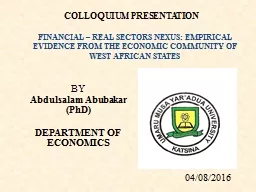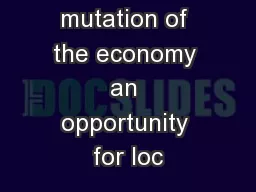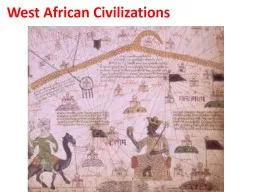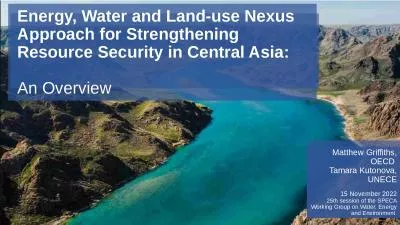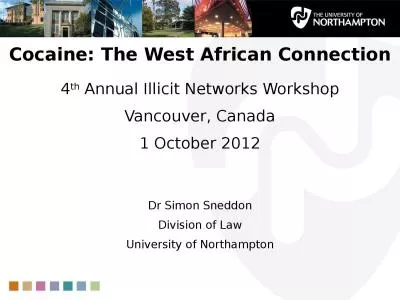PPT-FINANCIAL – REAL SECTORS NEXUS: EMPIRICAL EVIDENCE FROM THE ECONOMIC COMMUNITY OF WEST
Author : taxiheineken | Published Date : 2020-08-26
04082016 BY Abdulsalam Abubakar PhD DEPARTMENT OF ECONOMICS COLLOQUIUM PRESENTATION OUTLINE OF THE PRESENTATION INTRODUCTION 2 OVERVIEW OF THE ECOWAS ECONOMY 3
Presentation Embed Code
Download Presentation
Download Presentation The PPT/PDF document "FINANCIAL – REAL SECTORS NEXUS: EMPIRI..." is the property of its rightful owner. Permission is granted to download and print the materials on this website for personal, non-commercial use only, and to display it on your personal computer provided you do not modify the materials and that you retain all copyright notices contained in the materials. By downloading content from our website, you accept the terms of this agreement.
FINANCIAL – REAL SECTORS NEXUS: EMPIRICAL EVIDENCE FROM THE ECONOMIC COMMUNITY OF WEST: Transcript
Download Rules Of Document
"FINANCIAL – REAL SECTORS NEXUS: EMPIRICAL EVIDENCE FROM THE ECONOMIC COMMUNITY OF WEST"The content belongs to its owner. You may download and print it for personal use, without modification, and keep all copyright notices. By downloading, you agree to these terms.
Related Documents

